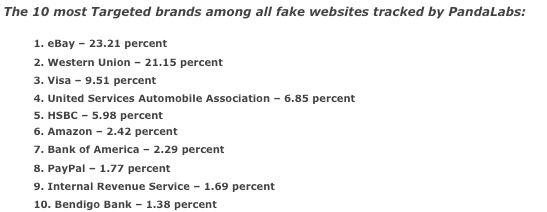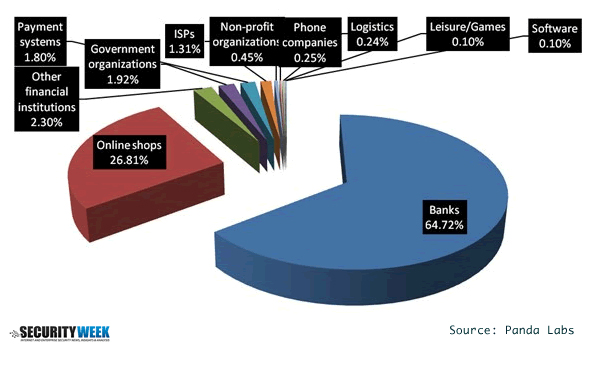
“Twenty years from now you will be more disappointed by the things that you didn't do than by the ones you did do. So throw off the bowlines. Sail away from the safe harbor. Catch the trade winds in your sails. Explore. Dream. Discover.” -Mark Twain-
Thursday, September 30, 2010
Sony Photographer of the Year Awards 2009

Tuesday, September 28, 2010
Ad guru David Droga on the positive powers of advertising
Photo feature: Bangkok’s blowtorch-wielding Buddha makers

A worker with a fierce industrial-strength buffer approaches a tipped-over giant Buddha to smooth the brass so it glistens.
Sparks flying, a man blowtorches the Buddha's head until its neck glows red hot, allowing it to be soldered onto a standing life-sized brass body.
Elsewhere in this large open-air factory, another worker shoves a fierce industrial-strength buffer onto the eyelids of a tipped-over giant Buddha, smoothing the brass so it glistens while the buffer's rotary engine whines.

Temples, institutions, hotels, homes and businesses in Thailand often display a giant Buddha atop a reverential plinth, surrounded by flowers, currency notes, portraits, food, candles, incense and small statues, worshipped by devotees and tended with care.
But making a huge Buddha statue involves fire, bare hands and dangerous tools.
Building Buddha: A how-to guide
"Some people who order statues bring a photo of what they want the statue to look like, and we then make it based on the picture," says Thanyathip Ruengsirapat, who helps manage the Rong Lao Phra Ruang Samai factory, which builds big Buddhas in Nonthaburi, on Bangkok's outskirts.
"The first step is to use a sticky clay, to make a model of the statue. It has to be good quality clay, without any sand," she says, pointing at the wet clay feet of a standing, life-sized Buddha, draped in orange cloth.
"Then the customer will come and confirm this is the shape they want. It has to stay wet, and this clay can stay like this for only two weeks, otherwise it cracks.
"Then we put beeswax on top of the clay model. We boil the beeswax to make it soft, so we can mold it. We boil it here, on this fire."

"After boiling, we cool the beeswax by keeping it in water," Thanyathip says.
Snails, Garudas and floating body parts
Nearby, Kanyapak Laona, 36, shapes brown globs of cooled beeswax into thin strips, which she pushes into a flat board's indented circles, lines and other shapes.
"These bubble shapes are for Buddha's head," Kanyapak says, lifting a thin strip after it becomes the shape of several small circular half-shells, symbolizing the curls of Buddha's hair or, as some legends say, snails which crawled up and died while protecting his head when he meditated.
"I've been doing this work for about one year. Simple designs, like these round shapes, are easy to do, but detailed designs are more difficult.
"I feel proud to be one of the people who makes big Buddha statues. My husband also works here, right over there," Kanyapak says, pointing at a man smothering a mythical Hindu bird-like Garuda under a thick coat of fresh white plaster.

"You see this man covering a Garuda statue? Underneath the white plaster is a clay Garuda, covered with beeswax."
Nearby are rectangular pools of water, where brownish beeswax Buddha heads, hands and other body parts are kept, eerily floating like a macabre collection of dismembered humans.
"These pools are for storage of new beeswax models, because otherwise the heat will melt them," Thanyathip says. "When we want to use them, we can take them from the water."
Jewelers and other artisans call this ancient technique "the lost wax process."
The sum of many precious parts
Whether the workers are making a tiny earring or a giant Buddha, the process is the same: build a wax model, cake it in hard plaster, drill a hole in the base and another hole in the top. Pour in hot bronze, brass, silver, gold or other metal.
The incoming metal's heat melts the wax, which drains out through the bottom hole. The metal replaces the wax, and when cooled, hardens to be the same shape as the "lost wax" model.

Brass, bronze and other metals are melted in the factory's upright cylindrical ovens, which are covered in ash and cracked from years of heat.
Long-handled spoons are used to scoop the liquid metal and pour it into each plaster-covered statue part.
"We have to make the big statues in big pieces -- a separate head, separate arms, and separate body," Thanyathip says.
The metal cools and hardens inside the plaster mold after one day. Workers then hammer away the surrounding plaster, revealing the metal part. The pieces are then assembled with blowtorches, soldering, sanding machines, buffers, and other tools into big statues.
"The biggest Buddhas take about four months to finish, but a small Buddha will take only about two days," Thanyathip says.
Rising material costs and lower demand
Her father, 72-year-old Watcharapong Ruangsiripath, owns the factory.
"I've been making big Buddhas for more than 40 years, and have had this factory at this location for 30 years,” he says.
"I can make 10 or more Buddhas, of different sizes, every week. I have 50 workers here.
"I began this work when I was working in a Buddha factory, before starting my own factory. Every step is difficult when making a big Buddha. In the past five years, business for me is not so good at all, it has been going down.
"This factory produces made-to-order Buddhas, and less people are ordering them, because of the overall economy. All the materials are made in Thailand, and are getting more expensive.
"The most popular position for a big Buddha is the sitting position. The biggest Buddha we ever made was 14 meters tall. It was ordered by someone who took it to a temple in Buriram."



For more images of the Buddha factory, click on the main photo above.
Sarah Murdoch announces wrong name as Australia's Next Top Model contest winner
American Book Review Releases 100 Best First Lines From Novels
This is a great post! 100 of the best first lines from every famous novel in history! Someone has a lot of time on their hands! The American Book Review released this amazing list. Here’s the first 3:
1. Call me Ishmael. —Herman Melville, Moby-Dick (1851)
2. It is a truth universally acknowledged, that a single man in possession of a good fortune, must be in want of a wife. —Jane Austen, Pride and Prejudice (1813)
3. A screaming comes across the sky. —Thomas Pynchon, Gravity’s Rainbow (1973)
Here’s a link to the full article: http://americanbookreview.org/100BestLines.asp
via jasonpollock.tv
Thursday, September 23, 2010
100 World's Most Valuable Startups

Image: Facebook.com
Estimated Value: $25 billionLast Year's Rank / Valuation: #1 / $6.5 billion
Business: Facebook is the largest social networking site in the world with more than 500 million users, up 66% from 300 million users last year. According to Compete, it’s the third largest web property based on unique visitors.
Location: Palo Alto, California
More Info: About Facebook
CEO: Mark Zuckerberg
Investors: The company has raised more than $400M in funding since 2008. Microsoft ($246M), Hong Kong billionaire Li Ka-Shing ($60M), Greylock Partners and Meritech Capital Partners ($25M), Accel Partners ($12.8M), PayPal co-founder Peter Thiel ($500,000), European Founders Fund ($15M), Digital Sky Technologies ($200M) and TriplePoint Capital ($100M).
Analysis: Facebook is dominating the Internet. It has left a wake of waning competitors in its path (MySpace, Ning, Bebo). It just replaced Google as the number one destination users spend most of their time. Revenue last year was estimated at around $700 million with branded and performance advertising comprising the bulk. The company has had considerable success selling ads due to its size, brand, and ability to develop products like engagement ads that interact with users. Facebook is also rumored to deepen its search relationship with Microsoft by mining anonimized data from consumer usage, illustrating the importance of Facebook’s massive information-generating audience, not too mention likely pissing off Google.
Mark Zuckerberg has stated that 2010 revenue estimates of between $1 billion and $1.1 billion “are not so far off." If we take the conservative end of that range and apply a 25x multiple due to its incredible growth, emerging market segments, low cost of goods, app platform and advertising and gaming potential, we get a $25 billion valuation. Additionally, Elevation Partners recently purchased 2.4 million shares in the secondary market implying a valuation of $23 billion. Shares are trading as high as $34 billion on Sharespost, a whopping 30x estimated sales and more than eBay's market cap.
See rest of the bunch go to ----> http://www.businessinsider.com/digital-100#1-facebook-1
http://jantervonen.com/100-worlds-most-valuable-startupsWednesday, September 22, 2010
Toronto-based blogger faces execution in Iran

Tuesday, September 21, 2010
Coming Soon: Tiny Hotel Rooms Right on the Airport Concourse
The legions of airline passengers stranded around the world several months back, victims of Volcanogate 2010, shone the floodlights on one seemingly inevitable fact of airports: They make for terrible hotels.
That’s about to change, if Dream and Fly has its way. The Barcelona-based design group has an idea to fit-out airports everywhere in small, designy “luxury rooms” -- think the Standard hard by Connections Bar & Grill.


Called “Bubbles,” they're fully equipped with beds, bathrooms, and tons of places to plug in laptops and the like (another seemingly inevitable fact of airports: they never have enough outlets). They come in three sizes; the largest, at 108 square feet, has a bed, a baby cot, and a bathroom. You rent them at a kiosk or online, and the rate is hourly. “Each Bubble has an astonishingly practical configuration, [and is] individually designed and built with attractive materials, offering great sleeping comfort and a unique experience,” Dream and Fly’s Cédric Michiels Chalamont tells us in an email.

It might sound weird at first -- only a crazy person would want to sleep at an airport. But because of strict security regulations, people are spending more time than ever at airports, and airports have adapted by turning themselves into little cities, with decent restaurants, bars, and way too many stores. Why not add sleeping accommodations to the mix? It’d be perfect for passengers with long layovers who want to catch some shuteye but don’t want to pass out on a chair. It’d also be great for people with canceled flights. Instead of wasting money on a cab to some crappy airport hotel, they could fetch up in a pod. Imagine how many people these things could have helped last April.

And it's not just a pipe dream. Chalamont says Dream and Fly has plans to implement Bubbles in two international airports. (Because of NDA contracts, he declined to specify which ones.)
Obviously, there are details to hammer out. How do you keep them clean? How do you make sure they don't turn into vessels for hot, airport hanky panky? And even if they are practical, will people actually use them? Or will they become like airport luggage carts, the exclusive realm of old people and families with too many children? Maybe we’re just not used to anything good coming out of places you rent by the hour. via fastcodesign.com
US millionaire leaves estate to wombats

WEALTHY WOMBATS: Baby wombat Ronan celebrates the good life as an American millionaire leaves a fortune to wombats in his will. Picture: SARAH REED
IN a real-life fairytale, an American millionaire has bequeathed $8 million to the Mannum-based Wombat Awareness Organisation.
"We are still in shock, we're still waiting for someone to say the money's not coming," director Brigitte Stevens said yesterday.
"It's unbelievable really, we're just blown away."
The millionaire, whose family has requested anonymity, unexpectedly visited the team of volunteers about two years ago to see the southern hairy-nosed wombats in the wild.
"I took him out into the wild population and showed him wombats with mange, wombats that were starving to death and wombats with burrows from motorbike tyres," she said.
The millionaire, who worked in the horse-racing industry, was captivated by the volunteers' tireless efforts to save what may be becoming an endangered icon.
Ms Stevens - who works to help pay bills, including last year's $70,000 vet fees - wants to buy two properties in the Murraylands and run a 24-hour free vet advice phone clinic.
However, with the bequest being delivered over eight years, and the first $1 million instalment due only next year, she says they still need money.
"We still really need SA support from people, because we could be waiting 12 months for the money and we're really struggling," she said.
The Wildest Dream movie sheds light on Mount Everest mystery

Adventurer Edmund Hillary of New Zealand and local guide Sherpa Tenzing Norgay at top of Mount Everest / File Source: Herald Sun
The Wildest Dream concludes that 1920s English adventurer George Mallory could be the first man to reach the top of the world's highest peak - decades before Sir Edmund Hillary, Sky News reports.
The feature documentary looks at the mystery surrounding Mallory, who risked everything in pursuit of his dream, using primitive gear and wearing gabardine and hobnailed boots.
Almost all of the adventurer's belongings were found intact on his body, apart from a photograph of his wife, Ruth, which he promised to place on the summit if he succeeded.
The photograph was never found, fuelling ongoing speculation.
Anker remained so haunted by the story that he returned to Everest with fellow climber Leo Houlding in a bid to work out whether Mallory could have reached the summit.
"I am glad that we don't know for sure - that would spoil the whole mystery, perhaps lessen this amazing story," Houlding said.
The British Film Institute's IMAX theatre will host the charity premier of The Wildest Dream in memory of British actress Natasha Richardson, who died of a head injury after a skiing accident just weeks after she narrated some of the film as the voice of Mallory's wife.
Read more on this story at Sky News.
Monday, September 20, 2010
My Husband's Next Business
The four words an entrepreneur’s spouse dreads hearing: “I have an idea.”

Esther Pearl Watson
As a resident of New Hampshire, I do not fear earthquakes. But I live in terror of four little words: "I have an idea." When my husband utters them, the ground beneath me trembles.
We were hiking a local mountain when Gary revealed his brainstorm for a chain of healthy fast-food restaurants. This was in 2000; his first venture, Stonyfield Yogurt, had been profitable and stable for several years. Gary saw this new business as a logical extension of the mission of our organic yogurt company. My husband sometimes refers to himself as a "pathological optimist." To me, this plan was just pathological.
When you live with a serial entrepreneur, you are never safe from the siren song of new ideas. As one repeat offender told me, "The personality of a serial entrepreneur is almost like a curse. You see opportunities every day." Danny Meyer cites a practical reason for populating much of Manhattan with his eclectic restaurants and food businesses: The new ventures provide development opportunities for his 1,500-plus employees. But as fundamentally, "I can't stop thinking of ideas that excite me," he says.
That creativity and independence are what attract people like me to entrepreneurs in the first place. As Gary points out, I knew what I was getting into when I married him. "While you didn't sign on for multiple rounds of pain, you signed on with me," he says. "You were drawn to the upsides of entrepreneurial business -- the excitement, the fascination, and the fun." All true. It had never crossed my mind to request a one-company-only prenup.
But when Gary broached the restaurant idea, I had not recovered -- in fact I have still not recovered -- from the extended trauma of the yogurt company's start-up. Stonyfield took nine agonizing years to reach profitability. Even though Gary said he intended to hire a CEO to run the restaurants, I anticipated a return to the grueling hours and constant distractions I thought we had finally put behind us. Serial entrepreneurs are like women who suppress the recollection of labor in order to marshal the stamina to give birth again. For their families, such selective memory is not so easy to muster.
Then, of course, any new business entails risk. Here I thought we were on terra firma, only to find Gary gazing longingly at rough seas. Entrepreneurs, as I knew from experience, are masters at defining risk down. So in my brain: "Gary knows nothing about the restaurant business." In Gary's brain: "I'll bring in smart people and figure out the rest." For many spouses, life stages enhance that sense of risk. Entrepreneurs launching second, third, and fourth companies are by definition older than when they started out: If they fail, there are fewer years to rebound. No wonder when the adrenaline kicks in for the serial entrepreneur, the cortisol spikes for the spouse.
Yet who would want to quash a loved one's dream? That way, unhappiness and resentment lie. "It's a crappy part for the spouse to play," says a friend whose husband started a second company. "To say 'no' or 'have you thought of this or that problem?' The way I dealt with it -- and I'm not proud of this fact -- is, I said, 'You want to go through this again? Fine, but I don't want anything to do with it.' We agreed on a certain amount of money he'd sink into it -- but we passed that number long ago."
Inc. reader Mallary Tytel, an entrepreneur married to a serial entrepreneur, tries to be realistic. "You have two choices: fighting it or going along with it," says Tytel, founder of the consultancy Healthy Workplaces. "As an entrepreneur myself, I know there's no percentage in going against the grain."
Nor could I go against the grain with Gary. Painful as the prospect of this new business was, I kept my mouth shut. As long as he wasn't jeopardizing the roof over our heads or our children's college funds, I figured he was entitled to his next dream. I comforted myself with the fact that he'd succeeded once. This time the learning curve should be less steep. Would be less steep. Had to be less steep.
At what point, though, does the spouse get to say enough? Let's assume that the first business was successful, and financial need is no longer a compelling motive. When does a spouse's desire for calm and security outweigh the entrepreneur's desire to be "who I am"? The answer, of course, is different for each couple and set of circumstances. Is it selfish to discourage a loved one from doing something he or she desperately wants to do because it makes you uncomfortable? Or more selfish for him or her to persist in spite of your discomfort?
Among other things, the spouse should consider whether the entrepreneur is truly succumbing to an irresistible opportunity or driven by a darker motivation. He or she may be depressed or bored, or seeking to fill a psychic or emotional void. One man told me that he kept creating businesses to escape his marital woes. Unfortunately, he didn't have that insight until after his divorce. At that point, he realized other ways that starting multiple businesses had made him less fit as a mate. "Entrepreneurs feel they have to have all the answers," he told me. "Starting several businesses only reinforced that. The control issues became habit forming, a way of being. When you apply that trait to your personal life, it doesn't go over very well."
Fortunately, there are less risky ways, both personally and professionally, for an entrepreneur to flex those creative muscles. Passive or active investing and mentoring can be like methadone for the entrepreneur, providing some of the thrill without all of the risk. Gary loves to mentor because, he says, "what I remember most about Stonyfield's dark days was the loneliness. I'm rewarded by the idea that with a little of my extra time and money, I might be able to help others avoid some pain."
And running an existing company -- even a mature one -- offers some of the charge of a start-up. "In my work at Stonyfield, I'm inventing new enterprises all the time," Gary says. "I take huge risks every day."
Not that that stopped him. Gary launched the first O'Naturals -- recently renamed Stonyfield Café -- in Falmouth, Maine, in 2001. As I'd feared, the business has consumed considerable time and energy. Also cash: Gary has put in much more than either of us expected. (We have since agreed on a total amount that he can risk on entrepreneurial ventures, including this one.) The café is now in two locations and is still finding its way as a business. I avoid discussing it with Gary and try not to think about it too much.
Recently, Gary assured me that he wouldn't start another company unless I was fully behind it. If this is true, he won't be starting another company anytime soon. Or, actually, ever. But somehow I suspect that our lives will continue to be rocked by seismic activity. I hope Gary's next idea will score lower on the Richter scale.
Meg Cadoux Hirshberg (mhirshberg@inc.com) is married to Gary Hirshberg, president and CEO of Stonyfield Yogurt. She writes a regular column about the impact of entrepreneurial businesses on families.
via inc.comSunday, September 19, 2010
Cambodia Images

Cambodia Image gallery from Lonely Planet. See all 38 pics by clicking the above link!
Facebook Is Secretly Building A Phone
 Facebook is building a mobile phone, says a source who has knowledge of the project. Or rather, they’re building the software for the phone and working with a third party to actually build the hardware. Which is exactly what Apple and everyone else does, too.
Facebook is building a mobile phone, says a source who has knowledge of the project. Or rather, they’re building the software for the phone and working with a third party to actually build the hardware. Which is exactly what Apple and everyone else does, too.
It was a little less than a year ago that we broke the news that Google was working on a phone of it’s own – which was eventually revealed as the Nexus One. It was about that time, says out source, that Facebook first became concerned about the increasing power of the iPhone and Android platforms. And that awesome Facebook apps for those phones may not be enough to counter a long term competitive threat.
Specifically, Facebook wants to integrate deeply into the contacts list and other core functions of the phone. It can only do that if it controls the operating system.
Two high level Facebook employees – Joe Hewitt
– are said to be secretly working on the project, which is unknown even to most Facebook staff.
Both have deep operating system experience.
Hewitt helped create the Firefox browser and was working on Parakey
before it was acquired by Facebook in 2007. Parakey, which never launched, was described as a “Web-based operating system.” Hewitt also created all of Facebook’s iPhone web apps and then native apps, but finally quit building for the iPhone in disgust late last year. But he knows operating systems and he knows mobile.
Papakipos also has a perfect background for this project. He was leading the Google Chrome OS project until June. He then quit and went to Facebook. Papakipos is considered a rockstar developer, and there are any number of jobs he’d be able to do at Facebook.
But that doesn’t answer the question of why he’d leave the Chrome OS project before it was finished. It would have taken something really interesting to lure him away. Something like a Facebook Phone, for example.
So what might this phone look and feel like? We don’t know yet. When will it be announced? Don’t know. But I’d speculate that it would be a lower end phone, something very affordable, that lets people fully integrate into their Facebook world. You call your friend’s name, not some ancient seven digit code, for example. I’d imagine Facebook wanting these things to get into as many hands as possible, so I’d expect a model at a less than $50 price. Pay your bill with Facebook Credits. Etc.
As for timing, the holiday season is always a good time to launch new products. But that may be too soon.
Or who knows, the whole project might get killed before it sees light. All we know for sure is that Hewitt and Papakipos are working on something very stealthy together. And we have a source that tells us that stealthy thing is a Facebook phone.
via techcrunch.comFriday, September 17, 2010
Matthieu Ricard: Why Meditate?
See Matthieus's video at: http://jantervonen.com/matthieu-ricard-why-meditate
You may learn more about him on his website, MatthieuRicard.com
Wesley E. Brown, 103, is Oldest Federal Judge

At 103, Judge Brown, of the United States District Court here, is old enough to have been unusually old when he enlisted during World War II. He is old enough to have witnessed a former law clerk’s appointment to serve beside him as a district judge — and, almost two decades later, the former clerk’s move to senior status. Judge Brown is so old, in fact, that in less than a year, should he survive, he will become the oldest practicing federal judge in the history of the United States.
Upon learning of the remarkable longevity of the man who was likely to sentence him to prison, Randy Hicks, like many defendants, became nervous. He worried whether Judge Brown was of sound enough mind to understand the legal issues of a complex wire fraud case and healthy enough to make it through what turned out to be two years of hearings. “And then,” he said, “I realized that people were probably thinking the same thing 20 years ago.”
“He might be up there another 20 years,” added Mr. Hicks, 40, who recently completed a 30-month sentence and calls himself an admirer of Judge Brown. “And I hope he is.”
The Constitution grants federal judges an almost-unparalleled option to keep working “during good behavior,” which, in practice, has meant as long as they want. But since that language was written, average life expectancy has more than doubled, to almost 80, and the number of people who live beyond 100 is rapidly growing. (Of the 10 oldest practicing federal judges on record, all but one served in the last 15 years.)
Read the whole story ---> via nytimes.com
Thursday, September 16, 2010
Ivana Trump sues IVANAhelsinki for using her name
Ivana Trump filed suit this morning against a Finnish fashion firm she claims is ripping off her famous first name.
The ex-wife of developer Donald Trump says IVANAhelsinki Ky and designer Paolo Ivana Suhonen are trying to trick people "into the erroneous belief" that she's "connected in some way" to their clothing.
Her Manhattan federal court suit seeks unspecified damages for trademark infringement, unfair competition and violations of privacy and publicity rights.
The former Czech model has been "a leading provider and marketer of fashion merchandise" since 1990, and trademarked "Ivana" for jewelry and eyewear in 2002, the suit says.

Ivana Trump with her dog are seen as she drinks wine at Cafe Le Gorille terrace in Saint Tropez, France.
In recent weeks, Trump's lawyer sent two "cease-and-desist" letters to IVANAhelsinki, but the company's lawyer responded on Tuesday that it wouldn't comply.
"The IVANAhelsinki brand has been a fashion house in Europe since 1998 and we don't market or endorse products that in any way intersect with the brand of Ivana Trump," Keri Ingvarsson said.
She also said Trump formerly held a trademark for clothing, but that it expired in 2006.
Paola might be getting the biggest coverage ever - for free!
Monday, September 13, 2010
St. Regis Luxury Hotel Set to Open in Lhasa, Tibet

The St. Regis Lhasa Resort in Tibet is set to open on November 15th of this year, just after the hotel group's first foray into China with the St. Regis Sanya Yalong Bay Resort, scheduled to open on November 1st. The entry of luxury hotels into China is nothing new, but into Lhasa, just adjacent to the famed Potala Palace no less, is sort of mind-boggling. Tibet has certainly lured visitors for decades, but the area is still rife with poverty and ethnic tensions, not to mention a certain 11,500 altitude of its capital, Lhasa, that makes it hard to breathe. Luxury has literally reached new heights.
The entry of the luxury hotel into Tibet signals yet again our shrinking
planet. Also developing, Cambodia has its fair share of luxury hotels.
So what's next--Hard Rock Hotel Tibet? Hard Rock Green may be more like
it. The St. Regis Lhasa Resort will be a "green" hotel, utilizing solar
panels and underground water as energy sources, and employing hybrid vehicles.
via fastcompany.com
Sunday, September 12, 2010
Saturday, September 11, 2010
GoDaddy.com goes up for sale

GoDaddy.com, the extremely popular site used to register domain
names online, has said this week that it is putting itself up for sale.
The site is expected to receive a bid over $1 billion.
GoDaddy, the world's largest domain name registrar, has 43 million domains under management.
The privately-held company was started by CEO Bob Parsons in 1997, and is well known for its advertising campaigns, such as the "Go Daddy Girls" ads shown off during recent Super Bowls.
Because the company is private, it does not have reveal its finances, but sources close to the site say the site posted revenue of almost $800 million last year.
Small rival Register.com was sold earlier in the year for $135 million.
via afterdawn.com
Sofia Coppola wins Venice Golden Lion for Somewhere

Sofia Coppola thanked her father, Francis Ford Coppola, for teaching her
Film director Sofia Coppola has taken the top prize at the Venice Film Festival, the Golden Lion, for her film Somewhere.
The film tells the story of an actor whose aimless life is transformed when his young daughter comes to stay.
Coppola, 39, based Somewhere on her own upbringing as the daughter of film director Francis Ford Coppola.
'Enchanted'
"Thanks to my dad for teaching me," she said in her acceptance speech.
"This film enchanted us from its first screening," said Quentin Tarantino, chairman of the jury which unanimously chose Copppola's film as the festival's best.
Coppola's last film, Marie Antoinette, was booed at its premiere during the Cannes Film Festival four years ago.

Somewhere stars Stephen Dorff and Ella Fanning
She is best known for her 2003 film, Lost in Translation, which starred Bill Murray and made her one of only a handful of women directors to be nominated for a Best Picture Oscar.
via bbc.co.uk
Friday, September 10, 2010
Spammers Make 57,000 Fake Websites a Week

Spammers and hackers are constantly trying to take advantage of unsuspecting consumers (also known as my parents) online. According to a three-month study by antivirus developer PandaLabs, these cyber-criminals are creating around 57,000 new fake websites every week. That's close to 3 million per year. And all of it is being done to exploit major brands.

These counterfeit sites are aimed at tricking users into providing personal information. So their biggest targets are banks and transaction companies such as Visa, Amazon, and PayPal. Together, these sites make up about 65% of the fakes. Clearly, hackers are cutting right to the chase: bank accounts and social security numbers.

And of the 375 high-profile brand most often imitated, two companies are
mimicked 44% of the time: eBay and Western Union, companies that do a huge bundle of business transactions every day.
"Although search engines are making an effort to mitigate the situation by changing indexing algorithms, they have so far been unable to offset the avalanche of new websites being created by hackers every day," said Luis Corrons, technical director of PandaLabs, in an interview with Security Week.
It should come as no surprise with this "avalanche" of fakes then that close to 75% of U.S. Internet users have fallen victim to some kind of cyber attack. We'd better make sure our parents are prepared.
| >via fastcompany.com |
Thursday, September 9, 2010
Freed Journalist Tricked Captors Into Twitter Access - PCWorld
A Japanese journalist freed over the weekend by captors in Afghanistan managed to send two Twitter messages before his release while teaching a captor how to access the Internet on a new cell phone, he said Tuesday.
Kosuke Tsuneoka, a freelance journalist, was released from five months of captivity on Saturday. His freedom came a day after the first messages since his disappearance were posted to his Twitter account.
"i am still allive [sic], but in jail," read a message sent at 1:15 p.m. GMT on Friday. It was followed a few minutes later with a second message, also in English, that read, "here is archi in kunduz. in the jail of commander lativ." The message referred to the Dasht-e-Archi district of Kunduz where he was being held.
Tsuneoka hadn't been heard from since disappearing on April 1, so the messages gave hope to family and friends, but were also greeted with skepticism by some who questioned aspects of them.
Why were they sent in English when Tsuneoka had been using only Japanese on his Twitter account? Why were they sent through Twitter's mobile Web interface when previous messages had been sent using the Gravity Twitter cell phone client? And how was he managing to post messages if he was in prison?
On Tuesday, speaking in Tokyo, Tsuneoka answered these questions and revealed how he managed to convince his captors to give him access to the Internet.
It began three days earlier when one of his captors, whom he identified as a low-ranking soldier, was showing him a new cell phone. The phone, a Nokia N70, is advanced compared to what many are using in Afghanistan and the soldier didn't know how to use it.
"He asked me if I knew how to use it, so I had a look and explained it to him," said Tsuneoka.
The soldier had heard of the Internet, but he didn't know what it was. When Tsuneoka mentioned it to him, he was eager to see it, but the phone wasn't signed up to receive the carrier's GPRS data service for accessing the Internet.
"I called the customer care number and activated the phone," he said. Soon after he had the captor's phone configured for Internet access.
"Once I told them I was able to access, they said 'how do you use it?', 'can we see Al Jazeera?'." Tsuneoka said he explained they just needed to type "Al Jazeera" into Google search to access the Qatar-based TV news network's website.
"But if you are going to do anything, you should use Twitter," he said he told them. "They asked what that was. And I told them that if you write something on it, then you can reach many Japanese journalists. So they said, 'try it'."
"I don't think they realize they were tricked," he said.
Martyn Williams covers Japan and general technology breaking news for The IDG News Service. Follow Martyn on Twitter at @martyn_williams. Martyn's e-mail address is martyn_williams@idg.com
Sony Transistor TV Bag | What to do with your old TV

As the country switches from analogue to digital TV, many Australians are choosing to upgrade their idiot box. Here are some of our favourite tips for what to do with your old set.
Turn it into a bag
Billed as the "bag you've been waiting for and you didn't even know", the Sony Transistor TV handbag is the creation of a New Zealand designer who goes by the name luxfordst.
The one-off item was posted for sale on online craft marketplace Etsy, along with a few notes on how it was made it. You can read them here.
Picture: Etsy.com
WARNING: Dismantling a television set can be dangerous and should not be done without the appropriate electrical qualifications or supervision.
Tuesday, September 7, 2010
Pirate Bay down, police raids across Europe

Pirate Bay down, police raids across Europe
Co-ordinated swoop in 14 countries
UPDATE, 14:02 GMT: Pirate Bay site now back online in UK, though torrent trackers appear not to be working. Further news as soon as it's available.
Torrent-tracking site The Pirate Bay is currently unavailable as reports come in of co-ordinated police raids against file sharers across Europe.
Police in up to 14 countries carried out raids against suspected file-sharing servers this morning.
According to file-sharing news site TorrentFreak, the bulk of police action seems to have taken place in Sweden.
Swedish Internet service provider ISP, which hosts both The Pirate Bay and whistle-blowing site WikiLeaks, earlier denied rumours of a police raid, saying that officers had visited them to ask questions over two suspect IP addresses, and that no computers or other goods had been seized.
Swedish Prosecutor Frederick Ingblad confirmed to Swedish newspaper Expressen that WikiLeaks was not involved in the current action.
"At 9:00 this morning, five policemen were here," PRQ director Mikael Viberg said. "They were interested in who was using two IP addresses from 2009 and onwards.
"We have no records of our clients but we're handing over the e-mail addresses for those behind the IPs. However, it's rare that our clients have mail addresses that are traceable."
It appears that a number of other locations in Sweden have been the subject of police action, including Stockholm, Malmö, Umeå university and Eskilstuna.
Four individuals are said to be being questioned on suspicion of breaching copyright law. Servers and computers are reported to have been seized.
Simultaneous raids are also said to have been carried out in The Netherlands, Belgium, Norway, Germany, Great Britain, the Czech Republic and Hungary.
The action, targeting the so-called 'Warez Scene', is said to have been in planning for two years, and is believed to have taken place at the request of Belgian authorities.
We'll keep you updated as further details emerge.
via thinq.co.uk
Thursday, September 2, 2010
12 Types of Cell Phone Users That Drive Us Nuts

12 Types of Cell Phone Users That Drive Us Nuts
Maybe you've seen Bluetooth Johnson, the bathroom texter or Han Solo, a.k.a, the holster master, in action. But hopefully, you don't see any of these 12 annoying cell phone characters when you look in the mirror.
By Al Sacco
Mobile phones have become unquestionably valuable tools, yet our devices can literally transform us into some pretty darn strange characters—often without our knowledge.
You've seen the type: Average Joes who seem unable to remove their Bluetooth headsets; gaggles of giggly high-school girls who only communicate via text, even if they're standing right next to each other; businessmen who appear to have eyes on the tops of their heads, as they effortlessly glide throve droves of people without ever looking up from a BlackBerry; the list goes on&just check out the slides below.
Then take a good look in the mirror. Do you fall into one of these categories? Remember, admitting you have a problem is the first step to recovery.
(Note: You may notice that my cell phone stereotypes are mostly male. All I can say: Good for you, ladies.)
Wednesday, September 1, 2010
'Love Plus' Resort Caters To Men With Virtual Girlfriends

Atami, a seaside resort town in Japan, is aiming to give tourism a boost by catering to male enthusiasts of Love Plus, a dating simulation game, according to Discovery News.
The town, formerly a popular destination for couples in love, has partnered with gaming company Konami Digital Entertainment, the creators of Love Plus, to establish a resort that brings together the virtual girlfriend and her real-world paramour in a beach-side setting.
Love Plus is described by Konami spokesman Kunio Ishihara as an extended scenario in which the real-life "beau" plays a high school boy character in a relationship with a virtual girl. "The goal," Kunio Ishihara told Discovery News, "is to see how good you can be to her [the virtual girlfriend] and to build a relationship." And what better way to reach a digital woman's heart than by whisking her away for a romantic weekend by the sea?
via huffingtonpost.com
Rolf Potts aims to travel the world with no luggage | News.com.au

Rolf Potts' vest has 18 pockets filled with items, but the pockets in his cargo pants remain empty / supplied
Source: Supplied

Items include a toothbrush, toothpaste, passport, credit cards, iPod and Bluetooth keyboard, a t-shirt and soap / supplied
Source: Supplied

His trip is believed to be the first fully documented attempt at travelling the world minus bags / supplied
Rolf Potts decided to test of the concept of “travelling light” by seeing how far he can go with only the items in his pockets.
Mr Potts, who has reported for National Geographic Traveller and Conde Nast Traveller, began his six-week journey around the world last week.
He departed from New York, US, and will fly to locations such as London, Western Europe, Morocco, Cairo, South Africa, Bangkok, Singapore, New Zealand before returning to New York on October 2.
"I can fit all of that into my vest without even using the big cargo pockets in my pants," he said.
He says he’ll still have room in his pockets for souvenirs, and is not hindered by the items he carries.
“As for walking around, it is no problem at all - far easier than carrying a daypack.”
He says the purpose of the challenge is to prove that you don’t need lots of items with you to have amazing travel experiences.
“Travelling light in general, be it a small carry on or a daypack instead of checked luggage, is not just smarter and cheaper, it makes the travel experience more fun,” Mr Potts said.
“With less to carry, there is more time to enjoy things.”
Currently in Fez, Morocco, Mr Potts says the challenge so far has been enjoyable and “not actually all that hard”.
He is updating his blog as he goes along on his six-week challenge and is uploading what he can from his mobile phone.
He will be accompanied by a videographer/producer to document the trip.
It is believed to be the first fully documented attempt at travelling the world minus bags.
His journey is sponsored by companies that create and sell lightweight travel clothes packed with pockets.
>




